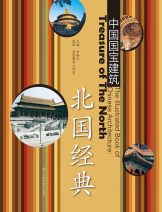
主要责任者: 庄裕光
责任方式: 主编
出版者: 凤凰出版传媒股份有限公司:江苏科学技术出版社
出版地: 南京
页码: 1-143
开本: 16
中图分类号: TU-092.2
语种:中
定价:28.00
出版时间:2014-03
丛书多卷书否:是
丛书名:中国国宝建筑
书目简介:本册工具书是中国国宝建筑之一,共收录64条词条。
被引频次:1
| 词条 | 北国经典 |
| 类别 | 中文百科知识 |
| 释义 |  主要责任者: 庄裕光 责任方式: 主编 出版者: 凤凰出版传媒股份有限公司:江苏科学技术出版社 出版地: 南京 页码: 1-143 开本: 16 中图分类号: TU-092.2 语种:中 定价:28.00 出版时间:2014-03 丛书多卷书否:是 丛书名:中国国宝建筑 书目简介:本册工具书是中国国宝建筑之一,共收录64条词条。 被引频次:1 |
| 随便看 |
开放百科全书收录579518条英语、德语、日语等多语种百科知识,基本涵盖了大多数领域的百科知识,是一部内容自由、开放的电子版国际百科全书。